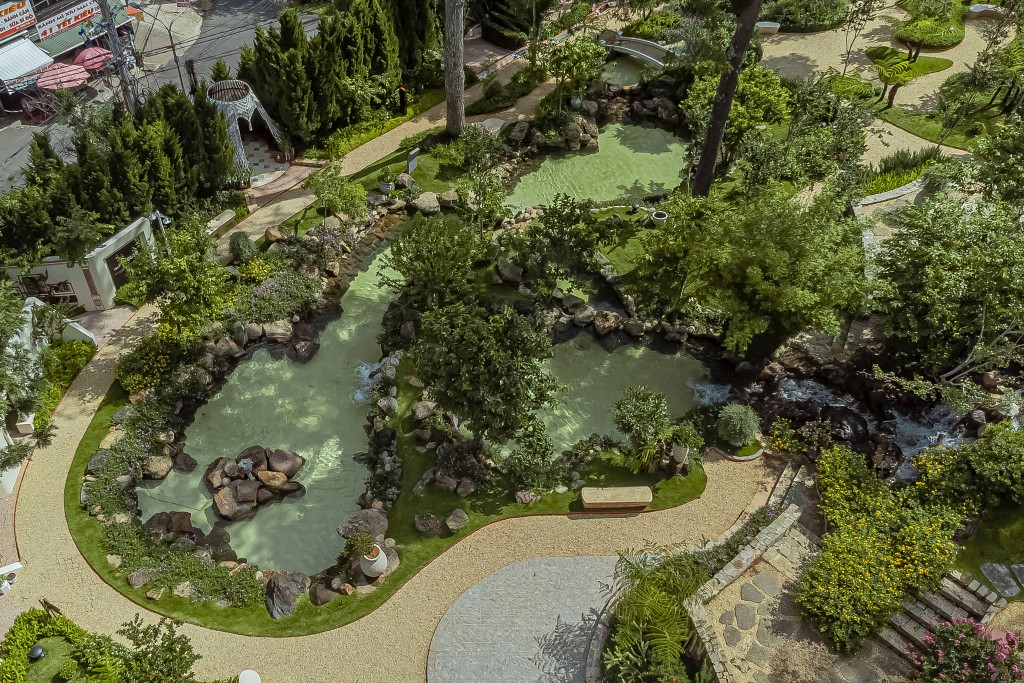Tran Le Xuan Mansion

The beauty accompanied by intact cultural values
Madame De Dalat, formerly known as the Tran Le Xuan Mansion, was once the retreat of Tran Le Xuan and her family. Tran Le Xuan referred to her days living in the palace as the "Happiest Time." Through numerous historical upheavals and fluctuations, this place has endured and showcases a wonderful beauty along with intact cultural values.
Historical periods

1958 - 1963
In 1958, after completing the purchase of the land on Lam Son Hill, Tran Le Xuan's family had the mansion built and renovated. During this time, it became a retreat for political advisor Ngo Dinh Nhu and First Lady Tran Le Xuan.

1963
November 1, 1963, marked the coup that overthrew the Ngo Dinh Diem government. Following the coup, President Ngo Dinh Diem and Ngo Dinh Nhu were assassinated, forcing Tran Le Xuan and her children into exile abroad. The Tran Le Xuan Mansion was confiscated, nationalized, and handed over to the Dalat City Hall for management.

After 1963
In 1969, the mansion was converted into the Central Highlands Ethnic Museum. After the fall of the Republic of Vietnam in 1975, the Tran Le Xuan Mansion gradually fell into oblivion. In 2006, the entire mansion was restored and transformed into the headquarters of the National Archives Center IV – Department of Archives and State Records. Currently, the mansion has once again been renovated and given a new look to become Madame De Dalat.
What you can visit

Transformation and preservation
The mansion is a refined blend of Eastern and Western architecture. The architect skillfully integrated traditional Vietnamese elements with the modern beauty of the West, resulting in a structure that is both artistically significant and comfortable.
The buildings in the mansion are constructed with graceful lines, intricate patterns, and a logical layout, showcasing a distinctive cultural fusion.
Once affectionately referred to as "The Precious Gem Among the Forests," the Tran Le Xuan Mansion stands out like a precious jewel, sparkling and capturing every gaze.
Having undergone many changes over time, the Tran Le Xuan Mansion, once the residence of a powerful family, has transformed into a distinctive architectural, cultural, and historical monument, now attracting attention under the new name "Madame De Dalat."
Despite enduring significant wear from the passage of time, through extensive preservation efforts, Madame De Dalat today retains its nearly original architectural space, becoming one of the few places that mark the symbol of Dalat.

The Memory Garden
The Memory Garden is a special "greeting" that Madame De Dalat offers to visitors. To this day, much like Dalat itself, the Tran Le Xuan Mansion and the life of its owner, Madame Tran Le Xuan, remain shrouded in numerous mysteries and untold legends.
The Memory Garden is a maze of countless questions and endless mysteries regarding its former owner and the people who have left their mark, contributing to the enchanting character of modern Dalat.

Lam Vien Museum
A place where visitors travel back in time, following in the footsteps of those who first set foot on the Lang Biang highlands hidden in the clouds, discovering the story of awakening this land and turning it into the "Little Paris of the East," full of romance.
The Lam Vien Museum also dedicates a special space to honor the journey of the Vietnamese ao dai through various periods, particularly highlighting the history and lesser-known "behind-the-scenes" stories of the boat-neck ao dai, which is still associated with the name of the owner of this palace: The Madame Nhu ao dai!

Madame Nhu's Garden
The most aesthetically pleasing space in the entire architectural complex of the Tran Le Xuan Mansion was designed and constructed by Japanese architect Hiroshi Kitagawa.
The garden has preserved its timeless beauty, defying the passage of time. A standout feature is the artificial stream and the lake shaped like the map of Vietnam, coupled with the legends surrounding the power aspirations of its female proprietor.
A refreshing highlight in Madame Nhu's Garden is the pathway that marks significant milestones and moments associated with the life of Madame Nhu.
